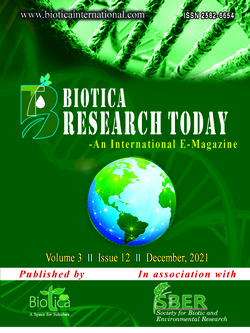
The Role of Microorganisms in Aquaponics
Rajasekar Veeramani*
Dept. of Aquacultural Engineering, College of Fisheries Engineering, Tamil Nadu Dr. J. Jayalalithaa Fisheries University, Nagapattinam, Tamil Nadu (611 002), India
R.U. Roshan
Dept. of Aquacultural Engineering, College of Fisheries Engineering, Tamil Nadu Dr. J. Jayalalithaa Fisheries University, Nagapattinam, Tamil Nadu (611 002), India
Mohammad Tanveer
Dept. of Aquacultural Engineering, College of Fisheries Engineering, Tamil Nadu Dr. J. Jayalalithaa Fisheries University, Nagapattinam, Tamil Nadu (611 002), India
A. Gopalakannan
Dept. of Aquatic Animal Health Management, Dr. M.G.R. Fisheries College and Research Institute, Tamil Nadu Dr. J. Jayalalithaa Fisheries University, Nagapattinam, Tamil Nadu (611 002), India
DOI: NIL
Keywords: Aquaponics, Heterotrophic bacteria, Nitrifying bacteria, Water quality parameters
Abstract
When people think about aquaponics, the first thing that comes to their mind is fish and plants, as aquaponics is often defined as a combination of producing fish and growing plants in a single eco-friendly sustainable system. Bacteria, on the other hand, are a vital part of an aquaponics system. To maintain a successful aquaponics system, the three major components must be present: fish, plants, and microbes. Proper water quality parameters must be maintained to grow the selected bacteria group. Change in water quality makes other harmful bacteria group to grow which retards the growth of plants and animals in aquaponics. In this article, microbes and its maintenance in aquaponics system are discussed in details due to its irreplaceable role in converting the fish waste into valuable food products.
Downloads
not found
Reference
Somerville, C., Cohen, M., Pantanella, E., Stankus, A., Lovatelli, A., 2014. Smallscale aquaponic food production: integrated fish and plant farming. FAO Fisheries and Aquaculture Technical Paper 589, 75-78.
